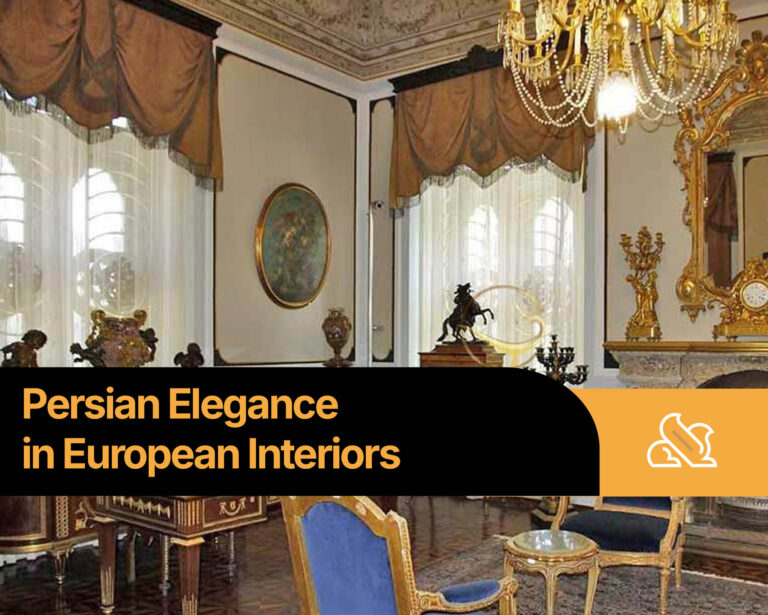The Sasanian Era and the Rise of Zarbaf
During the Sasanian Empire (224–651 CE), Iran flourished as a beacon of art, culture, and innovation. Among its most iconic artistic achievements was the intricate craft of zarbaf weaving. These luxurious fabrics—made with gold, silver, and silk—were not just textiles but powerful symbols of status, divinity, and diplomacy. Their enduring legacy showcases the brilliance of Persian artisanship.
- Origins and Cultural Flourishing
The Sasanian rulers, aiming to revive Iran’s imperial identity after centuries of Hellenistic influence, drew inspiration from the Achaemenid legacy. This cultural revival led to innovations in design, fashion, and symbolism. Zarbaf fabrics, with their gold-threaded beauty and mythical motifs, became a defining aesthetic of this golden age.
A Fusion of East and West
Influences from Byzantine, Indian, and Chinese design merged with ancient Persian traditions. This fusion gave birth to textiles of unparalleled beauty—each piece reflecting a global conversation rooted in Persian excellence.
- Technical Brilliance in Weaving
Zarbaf weaving required both technical mastery and artistic depth. Silk provided a soft yet durable base, while gold and silver threads were woven into dazzling patterns that played with light and motion.
Metallic Threadwork
To craft these radiant fabrics, artisans used finely beaten gold and silver wrapped around silk cores. These were then woven with extreme precision into robes and tapestries, making each piece a marvel of engineering and beauty.
Royal Workshops
Specialized ateliers—often within royal cities like Ctesiphon and Ray—employed master weavers whose skills were nurtured by state patronage. These workshops functioned like ancient haute couture houses, producing garments fit for emperors and gods.
- Patterns, Symbols, and Spiritual Meaning
Zarbaf fabrics went beyond decoration. They carried messages—visual stories of power, protection, fertility, and cosmic order.
Royal Animals
Lions, eagles, rams, and mythical creatures appeared frequently, symbolizing strength, majesty, and divine legitimacy. Their recurring presence helped reinforce the emperor’s sacred status.
Sacred Geometry and Nature
Symmetrical designs of lotuses, pomegranates, and palmettes echoed fertility and abundance. Repeating patterns expressed harmony and order, central to Zoroastrian cosmology and Persian aesthetics.
Myth and Faith
Some zarbaf designs depicted sacred fires, battle victories, or gods from Zoroastrian tradition. These textiles functioned as visual texts, teaching cosmological and ethical values through thread and form.
- Zarbaf at the Heart of Imperial Life
These fabrics were not just worn—they were performed. Draped in palaces, used as diplomatic gifts, and incorporated into ceremonies, zarbaf textiles helped stage the power of the empire.
Imperial Wardrobe
Monarchs and high officials donned zarbaf robes tailored from custom-designed bolts of fabric. The glitter of gold and the complexity of the weave signaled divine favor and unmatched prestige.
Gifts of Power
In diplomacy, beauty equals influence. Sasanian zarbaf was sent to foreign courts in Byzantium, India, and China. These gifts, luxurious and awe-inspiring, became tactile expressions of Persian cultural superiority.
- Global Influence and Enduring Legacy
While Zarbaf weaving was born in the heart of the Sasanian Empire, its beauty and complexity left lasting impressions far beyond Persia’s borders. These golden fabrics, rich in symbolism and craftsmanship, played a crucial role in shaping the aesthetic language of both Eastern and Western textile traditions.
Byzantine and European Echoes
Through trade, diplomacy, and conquest, zarbaf fabrics found their way into Byzantine markets and royal treasuries. The Byzantines, long-time rivals and admirers of the Sasanians, began to emulate Persian textile motifs in their own imperial garments and church vestments. The intricate medallion patterns, often seen in Sasanian silks, reappeared in early medieval European tapestries and liturgical clothing, sometimes centuries after the fall of the Sasanian Empire.
Eastward Influence
Zarbaf’s influence also traveled east along the Silk Road. In Tang dynasty China, Sasanian textiles became highly prized luxury imports, used in court attire and religious ceremonies. Fragments of these fabrics have been discovered in burial sites and ancient temples, highlighting their value as both spiritual and decorative objects.
Legacy in Islamic Art
Following the Arab conquest of Persia, many Sasanian weaving techniques and motifs were adopted and adapted into Islamic art and design. Zarbaf’s legacy can be traced in the luxurious textiles produced during the Abbasid, Fatimid, and Safavid periods. Persian weavers continued to be renowned for their mastery of metal-threaded fabrics, and the aesthetics of Sasanian zarbaf lived on through centuries of Islamic art.
Revival in the Modern Era
In recent years, there has been a resurgence of interest in traditional Iranian textile arts, including zarbaf. Contemporary designers and cultural institutions are exploring ancient techniques to reconnect with Iran’s rich artistic past. These modern efforts—whether through museum exhibitions, fashion collections, or academic research—seek not only to preserve but to reinterpret the elegance and ingenuity of Sasanian weaving for a new generation.
Zarbaf weaving is not simply a relic of history; it is a timeless testimony to Persian creativity, global influence, and the enduring power of beauty. As modern craftspeople return to the roots of this golden tradition, they are weaving not just fabric, but cultural memory and pride into every thread.
Conclusion: A Legacy in Every Thread
The art of zarbaf weaving in Sasanian Iran stands as one of the crowning achievements of Persian heritage. These textiles were more than art—they were vehicles of meaning, prestige, and spiritual power. Today, they inspire modern revivalists who see in every golden thread a connection to the elegance of ancient Persia.


